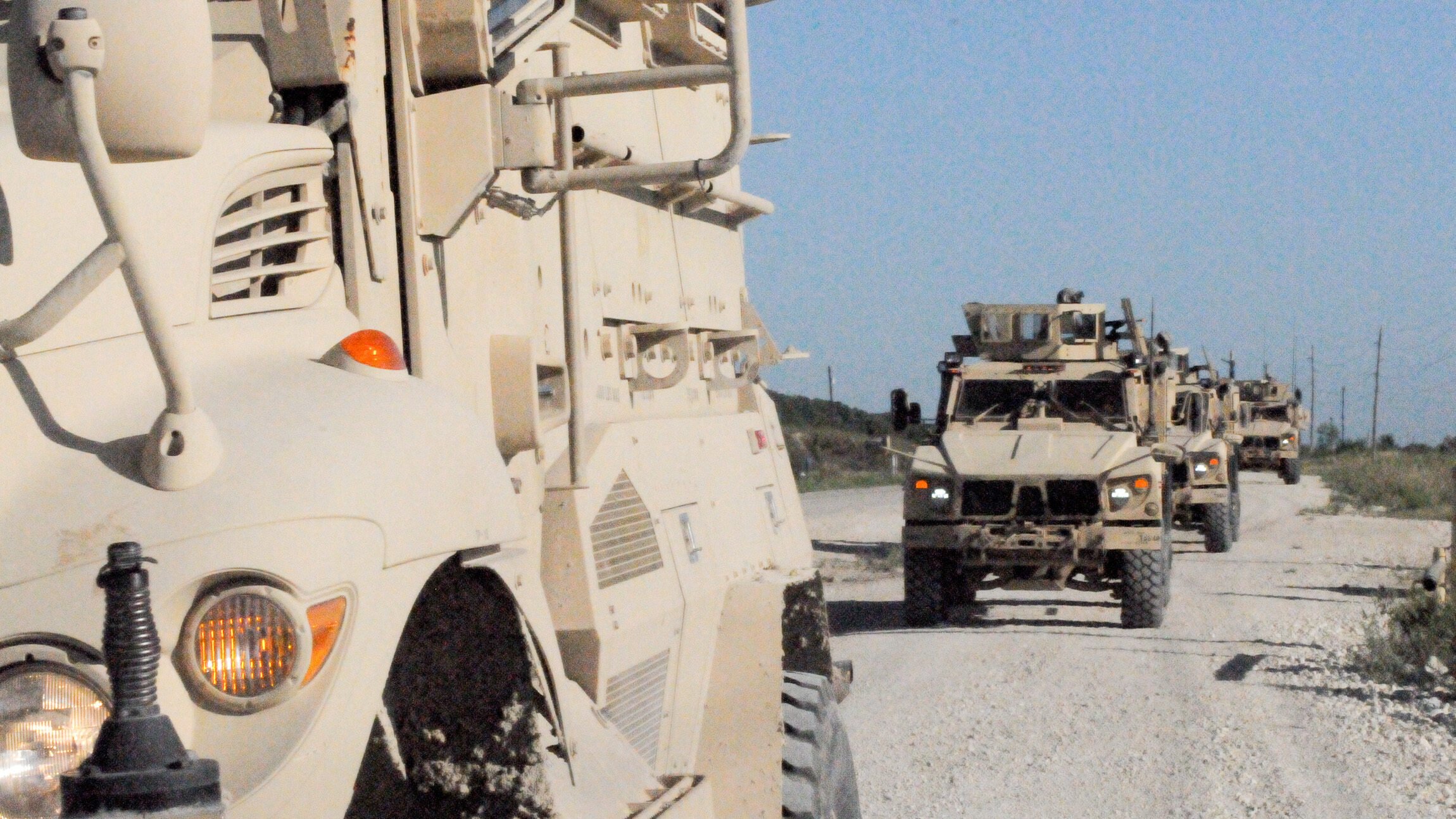
Soldiers in a First Army Division West NATO Training Mission – Afghanistan team conduct convoy lanes training on North Fort Hood, Texas, July 20. (Photo by Staff Sgt. Tony Foster, Division West Public Affairs)
GVSETS — The operational and tactical benefits artificial intelligence (AI) and machine learning (ML) can provide to ground vehicles has been apparent for years, and has pushed the US Army towards seeking ways to turn those ideas into reality. But while AI is all the rage as a mainstream idea in 2023, the service is still working out the early stages, an official said today.
Speaking at the 15th Annual Ground Vehicle Systems Engineering & Technology Symposium, in Novi, Mich., Col. Jeffrey Baker, Acting Director, US Army Artificial Intelligence Integration Center (AI2C) said that the branch is currently researching the best ways to test AI systems and ML capabilities.
“Certainly, we have a lot of work to do in this area. How we make sure that we test this in a way that commanders can say, I am comfortable putting this solution or this capability in the hands of my soldiers,” Baker said.
RELATED: AI will be ‘key to every single thing,’ SOCOM acquisition chief says
Responsible for implementing the Army’s Artificial Intelligence Strategy, AI2C partners with universities, industry and other Army units to modernize the service’s portfolio. Baker said that this enables the branch to ensure that “the lessons learned from one are certainly getting incorporated by the others” in order to develop best capabilities moving forward.
Currently, AI2C is working on several AI technology blocks with potential to provide operational advantages in the deployment, management and sustainment of ground vehicles. The focus areas include autonomy, human-AI Interaction, planning and acting, decision support, modeling, massive data management, devices and computing. More broadly, Baker’s team is working on workforce development, strengthening partnerships, and modernizing ground platforms. The branch has been also conducting trials and evaluations of AI- and ML-based models.
“The American people are comfortable with AI and ML solutions [use] in sustainment, and we are currently working on those areas, on safe predictive maintenance, on that the ability to see yourself logistically developing that common operating picture,” Baker told the audience.
AI2C has been working on efforts to provide well-structured and labeled data to operators in order to build up trust in AI tools. But the Army faces other obstacles preventing widespread use of those capabilities across its fleet, such as regulation, connectivity and data engineering.
“The policy and the understanding of how organizations can get access to the data is probably one of the things we need to solve in the near term,” Baker noted.
Army efforts to increase the use of AI are in line with the US National Defense Strategy 2022, which stated that the area has the “potential not just to change kinetic conflict, but also to disrupt day-to-day US supply chain and logistics operations.”
The document also notes that DoD will implement institutional reforms that integrate data, software and artificial intelligence efforts and “speed their delivery to the warfighter.”






















